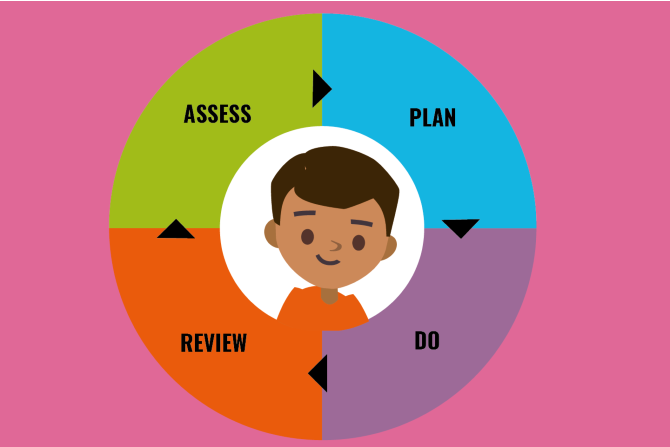Young people with a hearing impairment (HI) range from those with a mild hearing loss to those who are profoundly deaf. Individual needs vary and the requirement for one young person will not be the same for another. The level and structure of support provided will be developed through assessment of the young person’s needs. Parents and the young person themselves are key contributors to that assessment and to the development of any support plans and interventions.
Young people with hearing impairments cover the whole ability range. The young person with a hearing impairment may require hearing aids, adaptations to their environment and/or particular teaching strategies in order to access the concepts and language of the curriculum. A number of young people with a hearing impairment also have an additional disability or learning needs.
Types of Hearing Loss
A hearing loss may be conductive and/or sensorineural and can be measured on a decibel scale.
Conductive hearing loss is caused by blockage in the transmission of sound to the inner ear. Ear infections are the most common cause of this type of hearing loss in infants and young children. This loss is usually mild, temporary, and treatable with medicine or surgery.
Sensorineural hearing loss can happen when the sensitive inner ear (cochlea) has damage or a structural problem, though in rare cases it can be caused by problems with the auditory cortex, the part of the brain responsible for hearing. Cochlear hearing loss, the most common type, may involve a specific part of the cochlea such as the inner hair cells, outer hair cells, or both. It usually exists at birth, and can be inherited or come from other medical conditions, though sometimes the cause is unknown. This type of hearing loss is usually permanent.
The degree of sensorineural hearing loss can be:
- mild (the young person cannot hear certain sounds)
- moderate (the young person cannot hear many sounds)
- severe ( the young person cannot hear most sounds)
- profound (the young person cannot hear any sounds)
Sometimes the loss is progressive and sometimes unilateral (one ear only). Some young people with a significant loss communicate through sign instead of, or as well as, speech.
In Warwickshire, all children and young people with a hearing impairment are entitled to the support from the Integrated Disability Service Hearing Team regardless of the level of need and the level of support they require.


